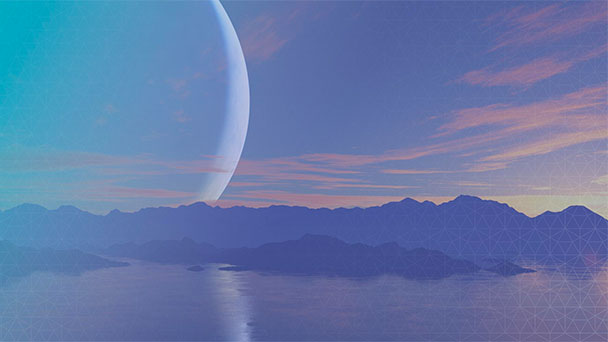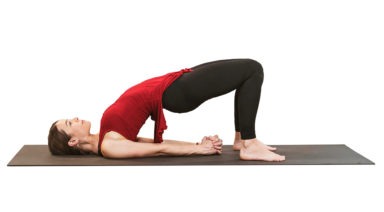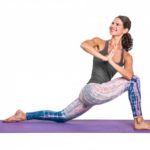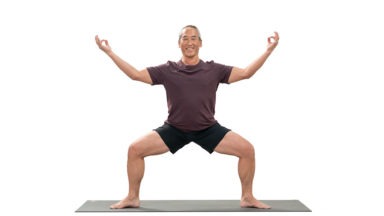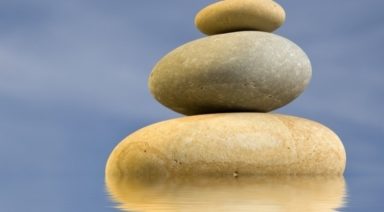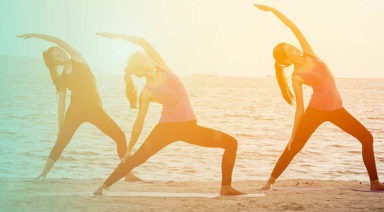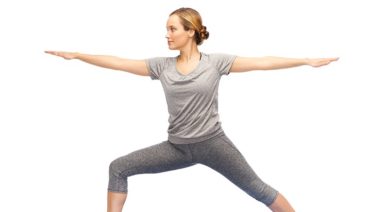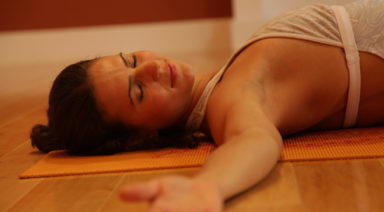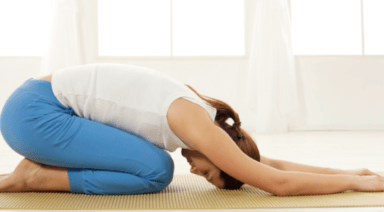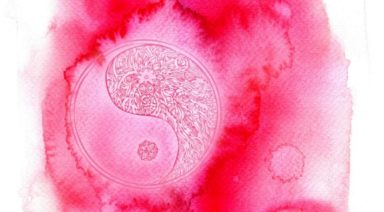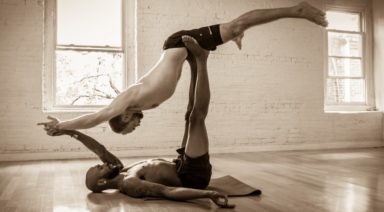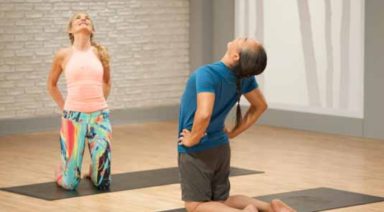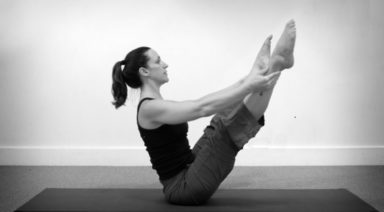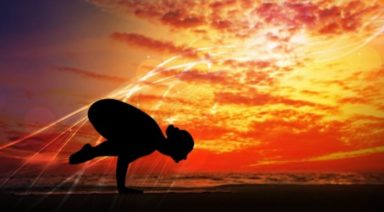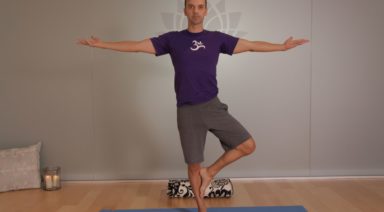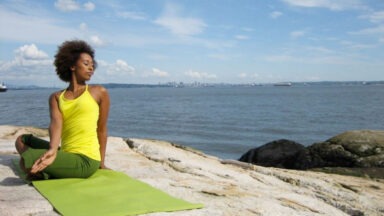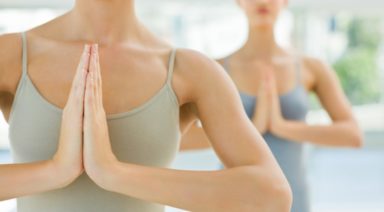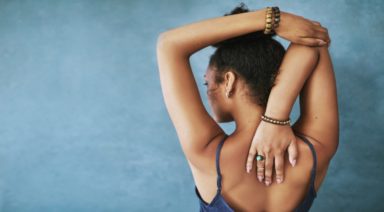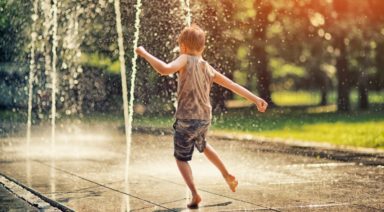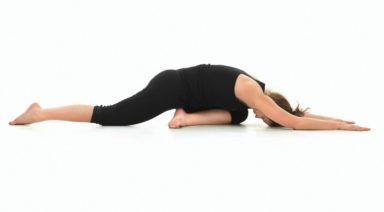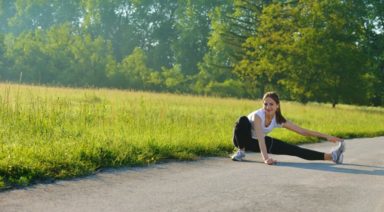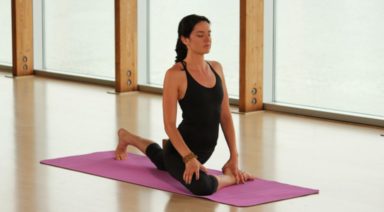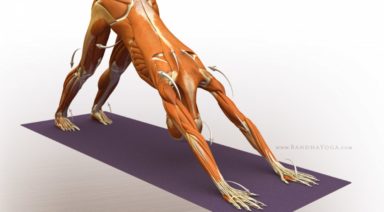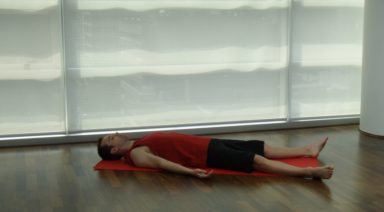Urdhva Prasarita Ekapadasana: Standing Splits Pose

ADJUSTMENTS | BENEFITS| SEQUENCING | SANSKRIT | STEPS
Urdhva prasarita ekapadasana (OORD-vah pra-sa-REE-tah EH-kah pahd-AS-ah-nah) is a great pose for practicing balance and increasing flexibility in the hamstrings. Standing splits also helps stabilize the hips and pelvis (with correct, closed-hip alignment), making it a great pose for building a solid foundation for your asana practice.
Philosophy + Origin
A variation of Hanumanasana (front splits pose), standing splits requires many of the same physical attributes and awareness. This version of the splits is physically challenging and asks to respect where you are today. Think of your lifted leg as an opportunity to strive and your lower leg as a reminder to be patient with your capacity at this moment.
ADJUSTMENTS/MODIFICATIONS:
- Place two blocks under your hands to bring the ground closer to you.
- Put the sole of your lifted foot against a wall for more stability.
STEP-BY-STEP:
- Begin in a lunge with your right foot forward. Place your hands on either side of your front foot, on blocks or the ground.
- Shift your weight onto your right foot and slide your left foot in, then lift it off the ground.
- Find a halfway lift in your torso, then fold your chest toward your toes.
- Lift your left leg up as high as you can while keeping hips level to the ground.
- Hold for up to 60 seconds before lowering the left leg to a forward fold. Pause for a few breaths then step the right foot back and repeat on the other side.
PREPARATORY POSES:
- Head to knee pose | Janu sirsasana
- Wide-legged forward fold | Prasarita padottanasana
- Half splits pose
SEQUENTIAL POSES:
- Front splits pose | Hanumanasana
- Dancers pose | Natarajasana
COUNTER POSES:
- Standing forward fold | Uttanasana
SANSKRIT:
- Urdhva = upward
- Prasarita = wide stance
- Eka = one
- Pada = foot
- Asana = pose
PHYSICAL BENEFITS:
- Stretches hip flexors, calves, and hamstrings.
- Creates stability in pelvis and hips.
Legal Disclaimer Before participating in any exercise program or using any fitness products or services that may be described and/or made accessible in or through the Gaia Website and/or the Services, you should consult with a physician or other healthcare provider. Read more about Gaia’s Terms Of Use.
Setu Bandhasana: Bridge Pose
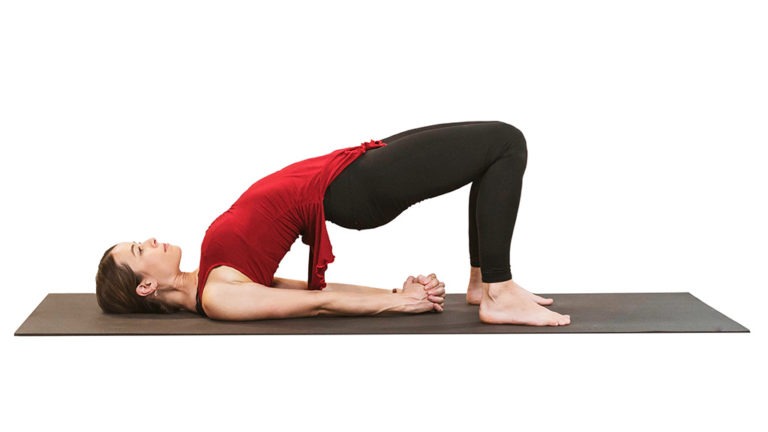
ADJUSTMENTS | BENEFITS | SEQUENCING | SANSKRIT | STEPS
Setu bandhasana (SET-too bahn-DAH-sa-na) provides a great stretch for the chest, hip flexors, and spine. Practice this pose to strengthen your legs and glutes or as a gentle inversion to calm your mind.
Philosophy + Origin
Like some other yoga poses, the name for bridge pose comes from its physical shape. The bridge pose is also a reminder of the opportunity to cross over from one place to another. The bridge is a connection between two different places, which can be physical, spiritual, or psychological. By forming a bridge with your body, you create a structure that invites transformation, one that can get you from where you are to where you want to be.


